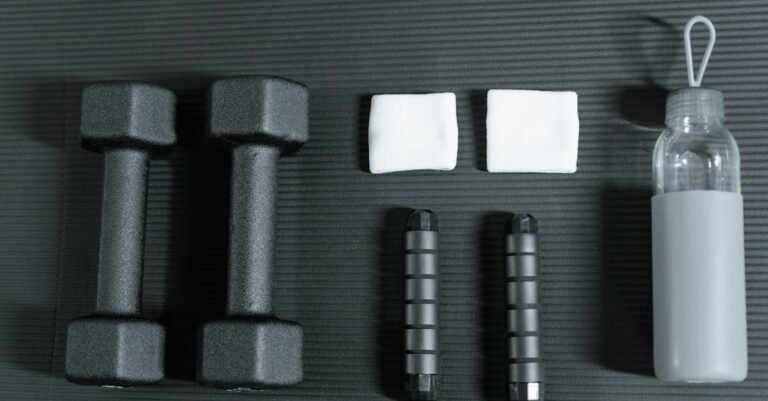Table of Contents
- Why Taking a Break is Your Secret Fitness Weapon
- Under the Hood: What Exercise Really Does to Your Body
- The Power of the Pause: What Happens When You Rest?
- Unlocking Peak Performance: Key Benefits of Rest Days
- The Million Dollar Question: How Much Rest Do You Actually Need?
- Making Your Downtime Count: How to Optimize Rest Days
- Conclusion: Embrace Rest, Unleash Your Potential
- Frequently Asked Questions
The Surprising Powerhouse: Unpacking the Underrated Benefits Of Rest Days In Your Fitness Plan
Why Taking a Break is Your Secret Fitness Weapon
Okay, let’s be real. In our go go go world, especially when you’re fired up about fitness goals, taking a day *off* can feel… wrong. Like you’re slacking, losing momentum, or letting those hard earned gains slip away. We’re often wired to think more is always more: more reps, more miles, more sweat. But what if I told you that strategically doing less could actually lead to more progress? Sounds counterintuitive, right? Yet, that’s the magic of rest days. They aren’t just about laziness or avoiding the gym; they are a fundamental, non negotiable part of any smart fitness plan. Think of it less like hitting the pause button and more like hitting the ‘upgrade’ button for your body and mind.
Ignoring rest is like trying to build a skyscraper without letting the concrete set between floors. You can keep adding levels (working out), but eventually, the whole structure becomes unstable and risks collapse (injury, burnout). Integrating rest days allows that crucial ‘setting’ process to happen, making the entire structure stronger and more resilient. So, let’s dive into why these breaks are not just beneficial, but absolutely essential for reaching your peak potential.
Under the Hood: What Exercise Really Does to Your Body
To truly appreciate rest, we first need to understand what happens when you push yourself during a workout. It’s not just about getting sweaty and feeling the burn; there’s a complex physiological process unfolding within you.
Microscopic Muscle Tears: The Foundation of Strength
When you challenge your muscles, whether through lifting weights, running sprints, or holding a tough yoga pose, you’re essentially causing tiny, microscopic tears in the muscle fibers. Now, don’t panic! This isn’t like a major injury; it’s actually a controlled stressor. Think of it like controlled demolition before a renovation. This micro trauma is the signal your body needs. It tells your internal repair crew, “Hey, we need to rebuild this area, and let’s make it stronger than before to handle this kind of stress next time!” This process, known as muscle protein breakdown, is the initial trigger for adaptation and growth. But – and this is the crucial part – the rebuilding doesn’t happen *during* the workout. It happens *after*, during rest.
Running on Fumes: How Exercise Depletes Your Energy Stores
Your muscles run primarily on a fuel source called glycogen, which is essentially stored carbohydrates. Intense or prolonged exercise significantly depletes these glycogen stores. Imagine your muscles have fuel tanks; exercise drains them. You also lose fluids and electrolytes through sweat. Pushing through workout after workout without adequate recovery time means you start subsequent sessions with partially empty tanks. This inevitably leads to decreased performance, fatigue, and a higher perceived effort for the same amount of work. You’re essentially trying to drive a car on low fuel – it just won’t perform optimally.
The Power of the Pause: What Happens When You Rest?
So, you’ve put your body through its paces, caused those micro tears, and depleted your energy. Now what? This is where rest days step in and work their wonders. It’s during this downtime that the real physiological improvements take place.
Building Back Stronger: Muscle Repair and Growth (Hello, Hypertrophy!)
Remember those microscopic muscle tears? Rest days provide the essential window for your body to repair this damage. But it doesn’t just repair; it overcompensates. Your body, being incredibly adaptive, rebuilds the muscle fibers thicker and stronger than they were before to better withstand future stress. This process is called muscle hypertrophy, and it’s the scientific term for muscle growth. Without adequate rest, you interrupt this vital repair cycle. You keep breaking down muscle tissue without giving it sufficient time to rebuild, leading to stagnation or even muscle loss over time.
The Simple Scoop on Protein Synthesis
How does this rebuilding happen? Through a process called muscle protein synthesis (MPS). Think of proteins as the building blocks (like bricks) for your muscles. After exercise stresses the muscles, your body ramps up MPS during rest, especially if you’ve consumed adequate protein. It takes those protein building blocks and uses them to repair the micro tears and add new muscle tissue. Rest provides the optimal environment – the quiet construction site – for MPS to occur efficiently. Consistent training without rest keeps the demolition crew working overtime and never lets the construction crew get started properly.
Refueling the Tank: Glycogen Replenishment
Rest days are prime time for your body to restock those depleted muscle glycogen stores. When you consume carbohydrates during your rest periods, your body converts them into glucose and then stores them as glycogen in your muscles and liver. Having fully replenished glycogen stores means you’ll have more energy, power, and endurance for your next workout. Trying to perform intense exercise with low glycogen is like asking a sprinter to run their best race after fasting for a day – it just won’t happen effectively. Rest allows you to show up to your next session fully fueled and ready to crush it.
Giving Your Command Center a Break: Nervous System Recovery
Fitness isn’t just about muscles; your central nervous system (CNS) – your brain and spinal cord – works incredibly hard during exercise. It’s responsible for recruiting muscle fibers, coordinating movements, and generating force. High intensity or high volume training places significant stress on the CNS. Think of it like your body’s main computer; constant heavy processing can lead to system fatigue. Rest allows the CNS to recover, preventing neurological fatigue, which can manifest as decreased coordination, slower reaction times, and reduced strength output, even if your muscles themselves feel okay. Giving your CNS a break ensures it can fire on all cylinders when you return to training.
Unlocking Peak Performance: Key Benefits of Rest Days
Now that we understand the science, let’s look at the tangible, real world benefits you gain by strategically scheduling rest into your fitness routine.
Dodging the Burnout Bullet: Preventing Overtraining Syndrome (OTS)
This is a big one. Overtraining Syndrome isn’t just feeling a bit tired; it’s a state of chronic fatigue and performance decline caused by accumulating training stress without sufficient recovery. It happens when the breakdown from training consistently outpaces the repair during rest. OTS can wreak havoc on your body, affecting everything from your performance and mood to your immune system and sleep patterns. Rest days are your primary defense against slipping into this detrimental state. They break the cycle of constant stress, allowing your body to catch up and adapt positively.
Listen to Your Body: Recognizing the Signs of Overtraining
How do you know if you’re nearing overtraining? Your body usually sends signals. Are you experiencing persistent muscle soreness that doesn’t go away? Is your performance plateauing or even declining despite training hard? Are you feeling unusually irritable, moody, or lacking motivation? Do you have trouble sleeping or notice changes in your appetite? Are you getting sick more often? These can all be subtle (or not so subtle) signs that you need more rest. Ignoring them is like ignoring the warning lights on your car’s dashboard – eventually, something’s likely to break down.
Level Up Your Game: Enhancing Athletic Performance
Want to lift heavier, run faster, or jump higher? Rest is your secret weapon. As we’ve discussed, rest allows for muscle repair and growth (hypertrophy), glycogen replenishment, and nervous system recovery. All these factors directly contribute to improved strength, power, endurance, and overall athletic performance. When you return to training after a proper rest day, you’re stronger, more energized, and mentally sharper. You can push harder, maintain better form, and ultimately make greater progress towards your goals. Skipping rest, conversely, leads to fatigue, suboptimal fuel stores, and a taxed nervous system, all of which hinder performance.
Playing it Safe: Reducing Your Risk of Injury
Training consistently without adequate recovery significantly increases your risk of injury. Why? Several reasons. Fatigue leads to sloppy form, making you more susceptible to strains, sprains, and other acute injuries. Accumulated stress on muscles, tendons, and ligaments without sufficient repair time can lead to overuse injuries like tendonitis or stress fractures. Overtraining can also weaken your immune system, making you more prone to illnesses that sideline you. Rest days allow tissues to repair, reduce accumulated fatigue, and help maintain focus and proper technique during workouts, ultimately keeping you safer and healthier in the long run.
More Than Muscle: Boosting Mental Health and Motivation
The grind can be mentally taxing. Constantly pushing yourself without breaks can lead to mental burnout, decreased motivation, and even resentment towards exercise. Rest days provide a necessary mental break. They allow you to step back, recharge psychologically, and maintain enthusiasm for your fitness journey. This mental refresh can prevent exercise from feeling like a chore and help you maintain consistency over the long term. Sometimes, the best thing for your motivation is simply stepping away and allowing yourself to miss it a little!
Keeping Things Balanced: Supporting Healthy Hormone Levels
Chronic, intense exercise without enough rest can disrupt your body’s delicate hormonal balance. Specifically, it can lead to elevated levels of cortisol (a stress hormone) and decreased levels of anabolic (muscle building) hormones like testosterone. This hormonal imbalance can hinder muscle growth, promote fat storage, negatively impact mood, disrupt sleep, and impair recovery. Rest helps regulate cortisol levels and supports a more favorable hormonal environment for recovery, adaptation, and overall well being.
The Million Dollar Question: How Much Rest Do You Actually Need?
Okay, so rest is crucial. But how much is enough? Unfortunately, there’s no single magic number. The ideal amount of rest varies significantly from person to person.
It’s Personal: Factors Influencing Your Rest Requirements
Several factors determine your individual rest needs:
- Training Intensity and Volume: Harder, longer, or more frequent workouts demand more recovery time. Someone doing intense weightlifting five days a week will need more rest than someone doing moderate cardio three days a week.
- Fitness Level: Beginners often need more rest days as their bodies adapt to new stresses. More experienced athletes might recover faster but also push themselves harder, potentially requiring strategic rest.
- Age: Recovery processes tend to slow down as we age, meaning older adults might benefit from more frequent rest days or longer recovery periods.
- Nutrition and Hydration: Proper fueling and hydration support faster recovery. Poor nutrition can hinder the repair process and necessitate more rest.
- Sleep Quality: Sleep is prime recovery time! If you’re not getting enough quality sleep (7 to 9 hours for most adults), you’ll need more dedicated rest days.
- Life Stress: Stress from work, relationships, or other life factors adds to your body’s overall load. High life stress can impair recovery and increase your need for rest.
- Your Goals: Are you training for a marathon, building maximum strength, or focusing on general health? Your specific goals will influence your training structure and rest requirements.
Listen to your body! Persistent fatigue, declining performance, nagging aches, and poor sleep are all signs you might need more rest, regardless of what your schedule says.
Chill Out or Move Gently? Active vs. Passive Rest
Rest doesn’t always mean becoming one with the couch (though sometimes, that’s exactly what’s needed!). There are two main types:
- Passive Rest: This involves complete rest or very minimal activity. Think sleeping, relaxing, reading a book. This is crucial for significant recovery, especially after very demanding workouts or when feeling rundown.
- Active Recovery: This involves low intensity movement on a rest day. Examples include a gentle walk, light cycling, stretching, foam rolling, or a leisurely swim. Active recovery can help promote blood flow, reduce muscle soreness (DOMS – Delayed Onset Muscle Soreness), and enhance the clearance of metabolic byproducts without adding significant stress.
Which is better? It depends! Both have their place. Often, a mix is ideal. If you’re feeling totally wiped out, passive rest is likely best. If you’re just a bit stiff or sore, some light active recovery might help you feel better and prepare for your next session. Experiment and see what feels best for your body.
Making Your Downtime Count: How to Optimize Rest Days
Simply not going to the gym isn’t enough. To truly maximize the benefits, be intentional about your rest days:
- Prioritize Sleep: Aim for 7 to 9 hours of quality sleep. This is when most muscle repair, growth hormone release, and overall recovery happens. Make your bedroom dark, cool, and quiet.
- Fuel Your Recovery: Don’t skimp on nutrition just because you’re not training. Focus on adequate protein intake to support muscle repair, complex carbohydrates to replenish glycogen, and healthy fats for overall function. Stay hydrated!
- Consider Active Recovery: As mentioned, light activity like walking, stretching, or foam rolling can aid recovery for some people. Avoid anything intense.
- Manage Stress: High stress levels impede recovery. Incorporate stress reducing activities like meditation, deep breathing, spending time in nature, or engaging in hobbies you enjoy.
- Listen Intently: Pay attention to your body’s signals. Are you feeling refreshed or still fatigued? Adjust your plan accordingly. Don’t be afraid to take an extra rest day if needed.
Conclusion: Embrace Rest, Unleash Your Potential
Think of rest days not as a sign of weakness, but as a testament to smart training. They are the unsung heroes of your fitness journey, the essential partners to your hard work in the gym or on the track. By allowing your body the time it desperately needs to repair, refuel, and rebuild, you’re not just preventing injury and burnout; you’re actively enhancing your performance, boosting your mental resilience, and paving the way for sustainable, long term progress. So, ditch the guilt. Schedule those rest days with confidence, knowing that you’re investing in a stronger, faster, healthier, and happier you. Embrace the pause, because it’s often in those moments of stillness that the real transformation happens.
Frequently Asked Questions
1. How many rest days should I take per week?
There’s no universal answer, as it depends heavily on factors like your training intensity, goals, age, sleep quality, and overall stress levels. A common guideline is 1 to 3 rest days per week. Beginners might start with more, while advanced athletes might structure rest based on training blocks. The best approach is to listen to your body’s feedback – persistent soreness, fatigue, or performance drops suggest you may need more rest.
2. Is it okay to do *nothing* on a rest day?
Absolutely! Passive rest, involving minimal physical activity, is perfectly fine and often necessary, especially after very intense training periods or if you’re feeling particularly fatigued. Sleep, relaxation, and proper nutrition are key components of effective passive rest. Don’t feel pressured to always do “active recovery” if your body is craving stillness.
3. Will I lose my fitness gains if I take a rest day (or two)?
No, quite the opposite! Taking planned rest days actually *supports* fitness gains by allowing for muscle repair, growth, and energy replenishment. Detraining (losing fitness) typically takes much longer than a couple of days – often 1 to 2 weeks of complete inactivity before significant losses occur. Rest days help prevent plateaus and overtraining, which *can* hinder progress.
4. Can I still do light cardio like walking on a rest day?
Yes, light activity often falls under “active recovery.” Gentle activities like walking, easy cycling, swimming, or stretching can promote blood flow and potentially reduce muscle soreness without adding significant stress. The key is to keep the intensity very low and the duration moderate. If it feels strenuous or leaves you tired, it’s too much for a rest day.
5. Should my nutrition be different on rest days compared to training days?
While your overall calorie needs might be slightly lower due to reduced activity, rest day nutrition is still crucial for recovery. Don’t drastically cut calories. Focus on consuming adequate protein (to support muscle protein synthesis), sufficient carbohydrates (to replenish glycogen stores), and healthy fats. Prioritize whole, nutrient dense foods and stay well hydrated to optimize the recovery process.










